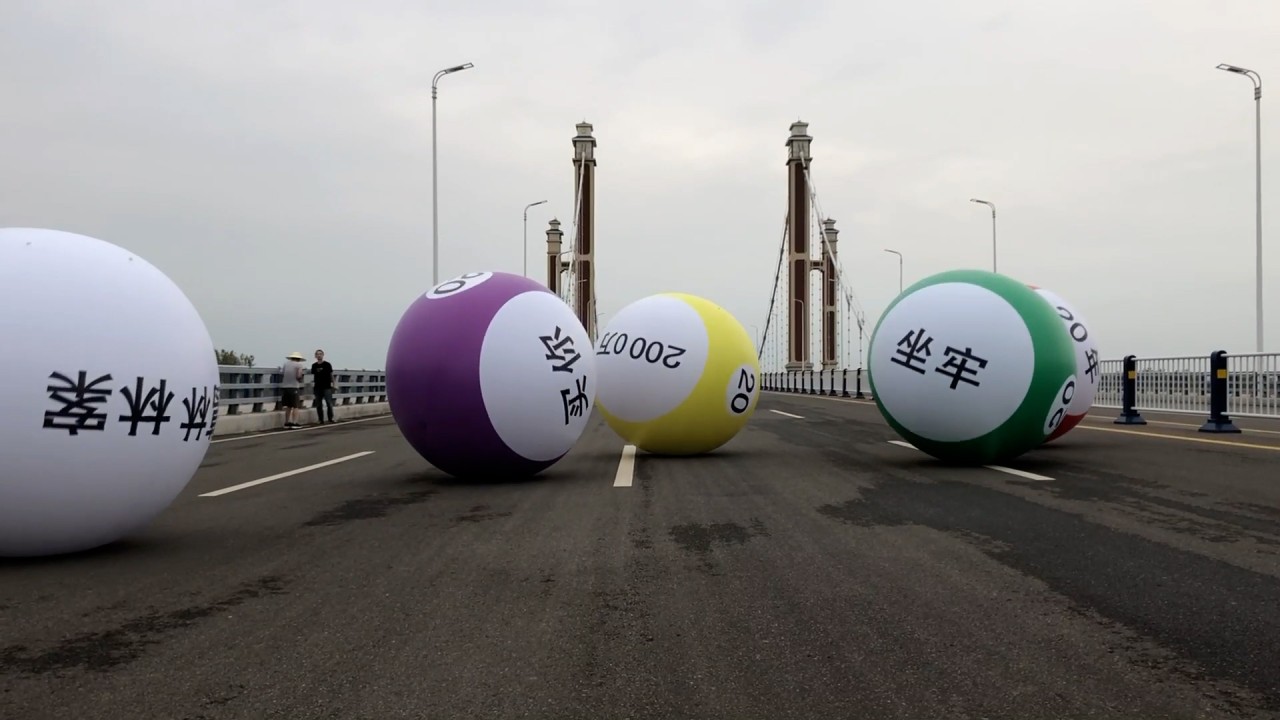
Woman in China stages public art protests over husband’s jailing and other social injustices
- A mother of two in Fuyang, eastern China, is using protest art to seek the release from prison of her businessman husband, convicted of being a triad leader
- She rolled giant inflatable balls proclaiming his innocence across a bridge, formed e-bikes into an SOS sign, and live-streams volunteers in a mock jail cell
A mother of two in eastern China is so determined to make her jailed husband’s plight known that she is creating brazen public art happenings that have gone viral on social media.
Tang Jie has invited supporters to go on live-streamed, 24-hour hunger strikes inside a metal cage in her flat in the city of Fuyang, and early on the morning of September 17, she and a team of helpers unleashed five giant inflatable balls on a suspension bridge.
The desperate 34-year-old is demanding a new trial for Ge Linlin, a businessman convicted in December 2019 of being a triad leader and given a 22-year jail sentence.
Each of the balls they released was two metres in diameter and covered in words proclaiming Ge’s innocence. The spectacle of what look like outsize billiard balls rolling down one side of the bridge has been viewed 390,000 times in three days since the video was uploaded to Weibo, China’s answer to Twitter.

00:45
Giant inflatable balls part of Chinese woman's ‘protest art’ seeking the release of jailed husband
Meanwhile, as part of a series of happenings Tang called “The Starving Artist Project”, 12 people, picked out of a total of 121 online applicants, took turns to spend 24 hours locked up in a cage in her living room with just a bed, a camp toilet and materials to make signs or artworks. While on public view via a live feed on Zoom and Bilibili, a popular Chinese video-sharing site, some used the opportunity to declare their support for Tang, while others protested against other social injustices.

Tang initiated the project by contacting a group of activist artists who often work together to bring attention to social issues in China. This group, which includes curator Zheng Hongbin and artist Wang Renzheng (who goes by the pseudonym Nut Brother), are known to challenge the authorities’ intolerance for dissent with highly theatrical protests.
“I saw their projects on social media and I was very impressed. I have come to the end of the road and this may be a way to get the message to a wider audience,” Tang says over the phone.

Zheng says the group decided to help Tang because her family have suffered from the “brutality of the system” and a lack of transparency which resonate with many ordinary Chinese citizens.
Tang last saw her husband of 11 years in 2018, when he left home to travel to Hainan Island. Once there, he was arrested for crimes he was accused of committing in Fuyang. Tang says he has no triad connections and that he was framed after he was involved in a personal dispute.
Her request to attend the court hearing was denied and, with his appeal to a higher court still pending, she has not been allowed to visit him in prison. Her husband’s lawyer was told this month that there would be no court hearing for his appeal. While it does not amount to a closing of the case, it makes it less likely that the conviction will be overturned.
I have come to the end of the road and this may be a way to get the message to a wider audience
The setback drove Tang to make another audacious gesture. On a weekday morning recently, the team rented 41 bright yellow shared e-bikes and lined them up in a plaza to form the letters S.O.S., disbanding before security guards arrived. The footage will also be shared on social media.

